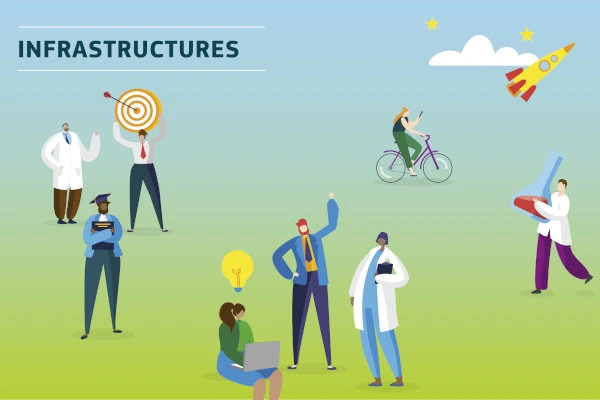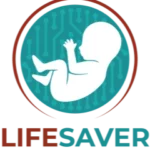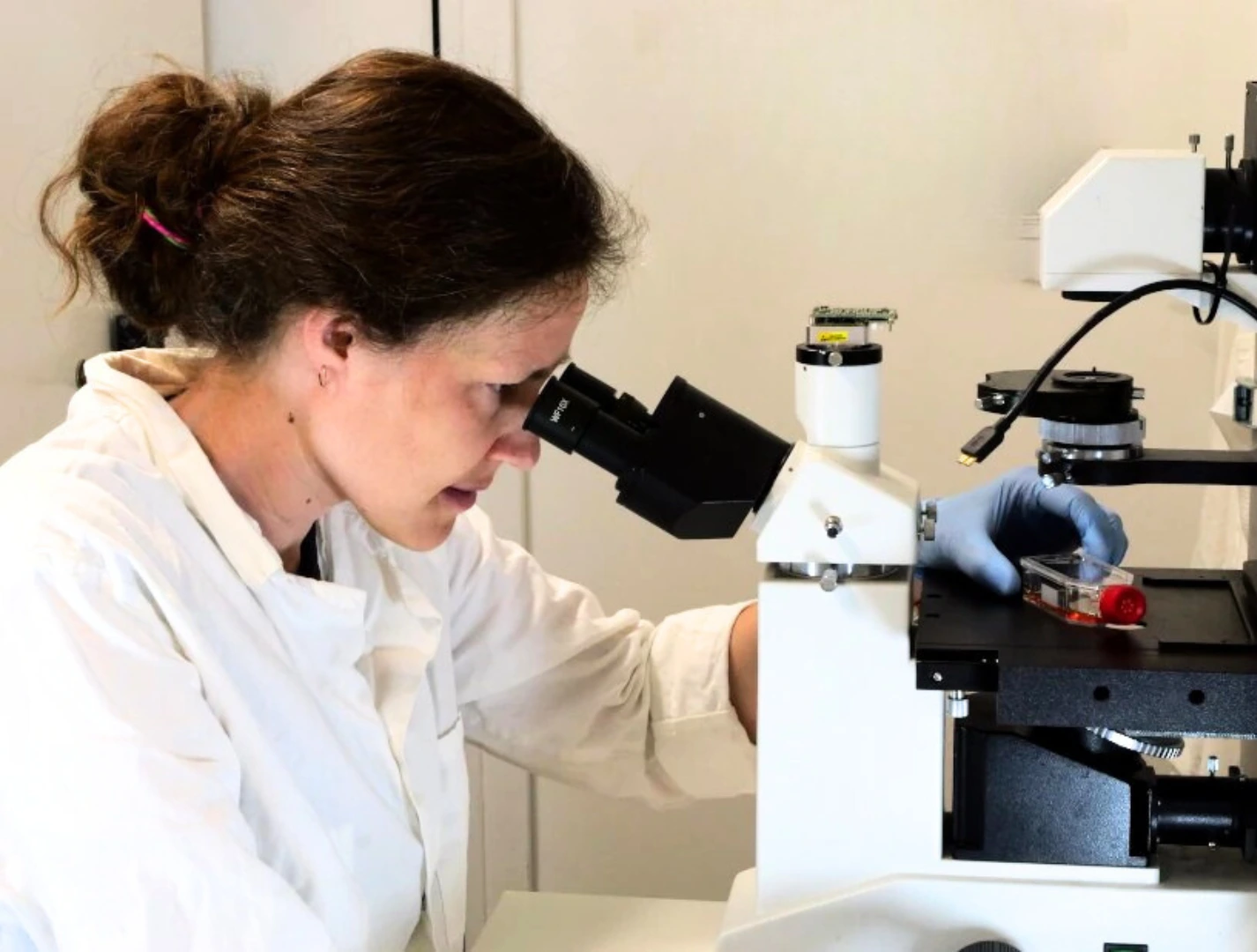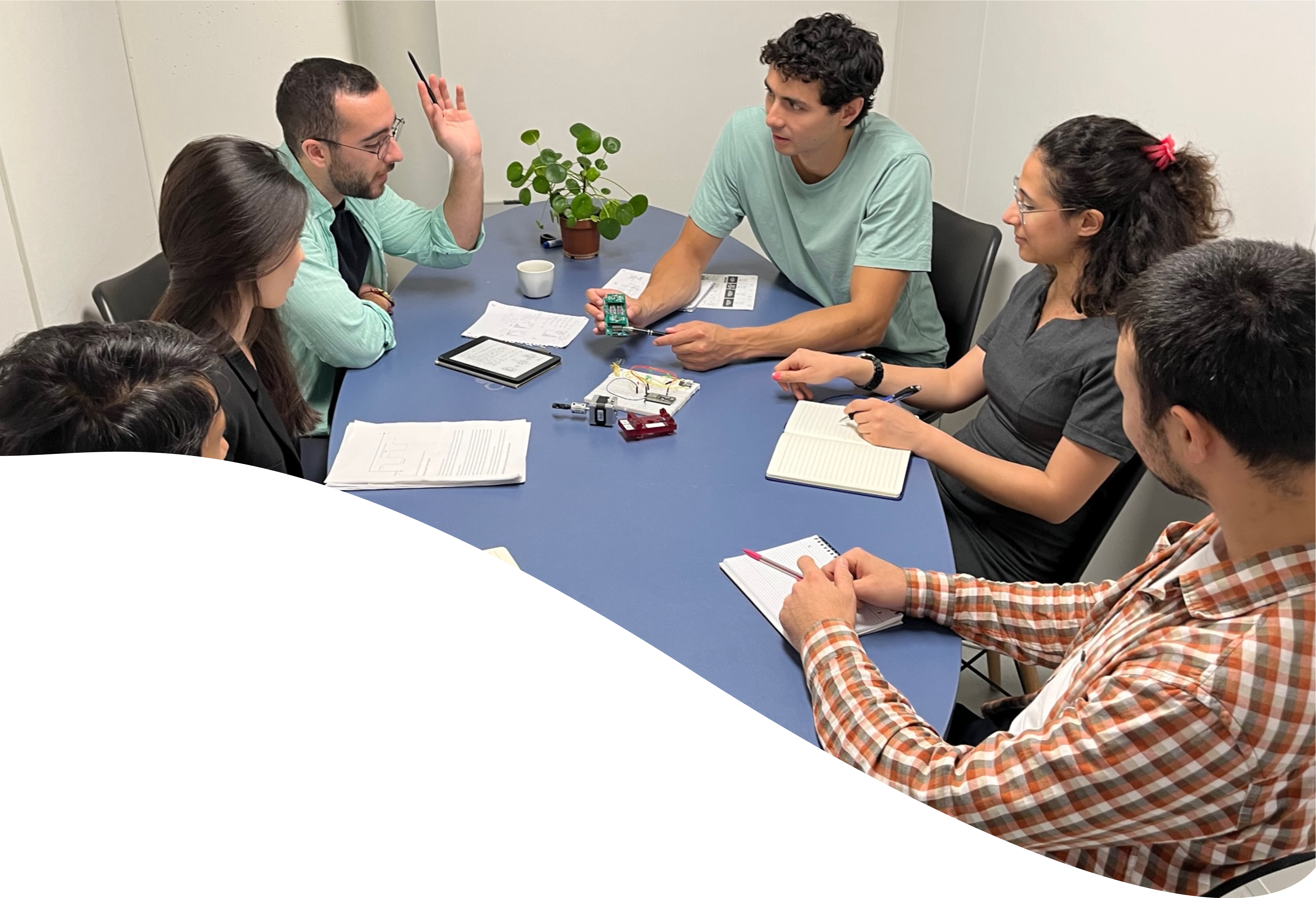INFRA - Research Infrastructures
Work Programme 2026-2027
Writer
Celeste Chidiac, PhD
Keywords
Microfluidic Devices, Intelligent Microfluidics, Artificial Intelligence, Machine Learning
Opening
Mar 2026/2027
Deadline
Jun 2026/2027
Keywords
Intelligent Microfluidics
Deep Learning
Microfluidic Devices
Artificial Intelligence
Machine Learning
Europe’s research infrastructure
transnational access
digital solutions
next-generation instrumentation
Your microfluidic SME partner for Horizon Europe!
We take care of microfluidic engineering, work on valorization and optimize the proposal with you
INFRA 2026-2027
Calls ordered by microfluidic relevance
We have sorted the calls for projects from INFRA 2026-2027 work programme according to the impact that microfluidics can have on the calls for projects and related topics. We are sharing our analysis in case it can help you with project funding efforts. And, of course, if our expertise can be of use to you, we would be delighted to discuss it further.

How to read the stars in terms of % of microfluidic technologies’ relevance for the call:
By microfluidic relevance, we mean the relevance of using microfluidic technologies for the topic cited. But also, to a lesser extent, what a microfluidic laboratory or SME could contribute to the topic (mainly for calls with low relevance to microfluidic technologies).
Relevance (%) | 90-100 | 80-89 | 70-79 | 60-69 | 50-59 | 40-49 | 30-39 | 20-29 | 10-19 | 0-9 |
Relevance (*) | ***** | **** | *** | ** | * | – | – – | – – – | – – – – | – – – – – |
Administrative dates per call:
HORIZON-INFRA-2026-DEV, 2026-01-EOSC, 2026-SERV, 2026-TECH: Opening 10 Mar 2026, deadline 16 Jun 2026
HORIZON-INFRA-2027-DEV, 2026-07-EOSC, 2027-SERV, 2027-TECH: Opening 09 Mar 2027, deadline 15 Jun 2027
The work programme draft can be found in the following link: INFRA
(Details for all topics are provided below, ordered by decreasing microfluidic relevance)
Discover more!
Horizon Europe INFRA 2026-2027 Calls ordered by microfluidic relevance
Download the INFRA 2026-2027 Call Calendar
- Type of action: RIA
- Budget (topic, M€): 90.00; Expected EU contribution/project (M€): 5.00-10.00; #projects: 9
Scientific focus
- Deliver innovative instrumentation, tools, methods, and digitalization to advance EU/AC research infrastructures (RIs) and enable new/expanded user services.
- Go beyond TRL‑4 for RI‑specific developments; complementary spin‑offs beyond RI use may reach TRL‑3/4.
- Include ≥2 ESFRI/ERIC/international European RIs as beneficiaries; engage industry/SMEs/startups; PCP/PPI options allowed.
- Address greening, resilience (energy, critical components/materials), and staff training for operation/validation (industrial standards).
- Foster innovation ecosystems and uptake beyond science markets while considering EU technology sovereignty.
Why a microfluidic partner adds value
- Co‑develop lab‑on‑chip / organ‑on‑chip platforms as RI user instruments (high‑throughput screening, single‑cell analysis, droplet assays).
- Microfabrication of polymer chips and custom flow control modules to upgrade beamlines, imaging cores, biobanks and analytical RIs.
- Embed on‑chip sample prep (cell sorting, proteomics/metabolomics pre‑concentration) that shortens workflows and reduces reagent/energy footprints.
- Provide miniaturized environmental sensors (PFAS, AMR markers, nanoparticles) for RI field stations; link to digital twins & FAIR data pipelines.
- Train RI staff on chip operation, calibration and QA; validate to industrial standards enabling downstream procurement.
- Type of action: RIA
- Budget (topic, M€): 30.00; Expected/project: 10.00-15.00; #projects: 2;
Scientific focus
- Strengthen RI-industry deep‑tech co‑creation, making Europe a top region for startups/ scaleups.
- Mandatory inclusion of ≥2 ESFRI/ERIC/international European RIs; FSTP (up to €500k/third party) to seed collaborative R&I projects.
- Build innovation ecosystems around RI technology roadmaps; accelerate digitalization and responsible technology uptake.
Why a microfluidic partner adds value
- Act as co‑creation node for microfluidic detectors, interfaces, and micro‑reactors tailored to RI needs (omics, imaging, materials).
- Rapidly iterate prototype chips with RI beamlines/cores; exploit FSTP to involve additional labs/SMEs for specific subsystems.
- Translate to industry‑ready modules (pumps/valves, cartridges, disposable chips); support regulatory‑grade validation in health/food RIs.
- Contribute to sustainable designs (low‑power actuation, recyclable polymers) and supply‑risk mitigation of critical components.
- Type of action: RIA
- Budget (topic, M€): 105.00; Expected/project: ~35.00; #projects: 3
Scientific focus
- Pilot integrated, cross‑domain access schemes with single‑entry portals, harmonized processes, and interoperability (EOSC connection).
- Combine transnational/virtual access, user support/training; may include centrally managed travel or FSTP for third‑party access providers.
- Tight collaboration with 2025‑DEV‑05, 2026‑DEV‑02, and 2027‑SERV‑02 to converge access conditions and governance.
Why a microfluidic partner adds value
- Serve as core or on‑demand access provider offering chip‑based assays, organ‑on‑chip models, micro‑fabrication services across domains (health, food, materials, environment).
- Provide standardized service catalogues (chips, protocols, training) and AI‑assisted navigation of microfluidic services integrated with RI clusters/portals.
- Deliver transnational training schools in microfluidic design/operation; co‑supervise user projects and accelerate FAIR data capture at source.
- Expand reach to widening/candidate countries via remote/virtual chip testing and shipping of ready‑to‑run cartridges.
- Type of action: RIA
- Budget (topic, M€): 35.00; Expected/project: ~6.00; #projects: 5
Scientific focus
- Provide transnational/virtual access via area‑based pilots addressing EU priorities; include training, data stewardship (EOSC), outreach.
- Areas include
- Area 1: Advancing cancer research (integrated biomedical infrastructures: imaging, omics, clinical trials; AI/predictive models).
- Area 2: Advanced technologies for contagious diseases (B/SL‑facilities, reference materials, diagnostics platforms, vaccine/therapeutic testing).
- Area 3: Cardiovascular and metabolic diseases (longitudinal cohorts; advanced imaging/omics; personalized therapies).
- Area 4: Engineering for green and resilient built environment (full‑scale testing; materials under dynamic loads).
- Area 5: Semiconductor research (advanced materials, characterization, prototyping).
- Area 6: Geosphere hazards & human‑induced changes (earthquakes, volcanoes, landslides; policy interfaces).
Why a microfluidic partner adds value
- In Areas 1-3, deliver patient‑derived organ‑on‑chip and immune‑on‑chip models, high‑throughput drug response and toxicology using miniaturized perfusion systems.
- Provide standardised chips and QA’d protocols to harmonize assays across access sites; enable portable, low‑sample diagnostics and point‑of‑need workflows.
- In Areas 4-6, supply environmental microfluidic sensors (pollutants, nanoparticles), lab‑in‑the‑field sample prep and micro‑reactors for materials synthesis.
- Type of action: RIA
- Budget (topic, M€): 10.00; Expected/project: 2.00-3.00; #projects: 4
Scientific focus
- Feasibility/design for new or transformative upgrades of RIs of European interest (all fields).
- Assess extension/integration with existing capacities; justify uniqueness vs. ESFRI landscape; address governance, technology, users, services, data/FAIR, and sustainability/greening from the outset.
Why a microfluidic partner adds value
- Co‑design the concept of distributed microfluidics/organ‑on‑chip RI nodes (fabrication hubs + application labs) or upgrade tracks inside biomedical/materials RIs.
- Specify equipment lists, interoperability standards, biobank‑to‑chip pipelines, and FAIR data at acquisition (metadata ontologies).
- Provide environmental/sustainability gains via miniaturization (orders‑of‑magnitude solvent/sample savings).
- Type of action: RIA
- Budget (topic, M€): 40.00; Expected/project: 4.00-8.00; #projects: 6;
Scientific focus
- Pilot cluster‑level coordination (by ESFRI domains) to harmonize services, connect catalogues, build AI‑assisted navigation, and flag services of strategic relevance to EU priorities; align with SERV‑01‑01/‑02 pilots.
Why a microfluidic partner adds value
- Represent microfluidic services within Health & Food and Physical Sciences & Engineering clusters; define shared standards, user support and quality KPIs.
- Contribute training, widening outreach, and interface to industrial users (chips as turnkey R&D services).
- Type of action: RIA
- Budget (topic, M€): 19.00; Expected/project: 2.00-5.00; #projects: 4
Scientific focus
- Operational integration/merging across ESFRI/ERICs (common horizontal/joint services, interoperability, shared tools), avoiding duplication and boosting efficiency; include staff exchanges.
Why a microfluidic partner adds value
- Bridge biomedical, materials, and environment RIs with common microfluidic platforms, enabling cross‑disciplinary user projects and portable SOPs.
- Type of action: RIA
- Budget (topic, M€): 8.00; Expected/project: 3.00-4.50; #projects: 2
Scientific focus
- Targeted support to ESFRI Landmarks/ERICs (membership growth incl. widening, addressing monitoring findings, greening, remote/virtual access, FAIR data, reorientation to new user communities).
Why a microfluidic partner adds value
- Introduce new chip‑based services at selected RIs (e.g., organ‑on‑chip histopathology correlatives, micro‑reactors for materials discovery), and remote‑ready protocols.
- Type of action: RIA
- Budget (topic, M€): 30.00; Expected/project: 3.00-4.50; #projects: 8
Scientific focus
- As above (individual ESFRI/ERIC evolution): new services, sustainability, greening, industry links, innovation potential, global ecosystem integration.
Why a microfluidic partner adds value
- Embed validated chip workflows into RI service menus and industrial engagement channels (pharma, medtech, materials SMEs).
- Type of action: RIA
- Budget (topic, M€): 11.60; Expected/project: ~3.00; #projects: 4
Scientific focus
- Provide transnational/virtual access focused on widening/candidate countries; bi‑directional exchanges, outreach, skills; adhere to European Charter for Access; may use FSTP. All TA under this topic goes to user groups led by/including a widening/candidate institution.
Why a microfluidic partner adds value
- Set up regional microfluidic nodes (training + access) and portable chip kits enabling excellence with limited local infrastructure; mentor early‑stage researchers.
- Type of action: RIA
- Budget (topic, M€): 32.00; #projects: 1
Scientific focus
- Expand EBRAINS digital RI services: multi‑scale brain data integration, modelling/simulation, neuromorphic computing and AI tools; data sharing/FAIR and user access/training for health and brain‑inspired tech.
Why a microfluidic partner adds value
- Provide brain‑on‑chip disease models feeding EBRAINS data portals; design micro‑neurofluidic interfaces matched to EBRAINS analytics/simulation workflows; develop standardised stimuli & perfusion chips to validate neuro‑AI predictions.
- Type of action: RIA
- Budget (topic, M€): 10.00; Expected/project: 1.00-4.00; #projects: 3
Scientific focus
- Develop risk assessment/contingency frameworks for RIs (energy/resource crises, supply dependencies, emergencies, research security).
Why a microfluidic partner adds value
- Contribute low‑consumption, miniaturized workflows reducing reagents/energy; diversify supply through EU‑based chip fabrication and interoperable components.
- Type of action: RIA
- Budget (topic, M€): 8.00; Indicative #projects: 1
Scientific focus
- Frameworks for UA‑EU RI collaboration, remote fellowships in instrumentation/methods, remote access for Ukrainian researchers, and early‑phase reconstruction planning; FSTP possible.
Why a microfluidic partner adds value
- Offer remote chip testing fellowships and donation of portable microfluidic kits to Ukrainian labs; co‑develop robust, low‑resource diagnostics/environmental workflows.
-HORIZON‑INFRA‑2026‑DEV‑01‑06 – STRENGTHENING THE INTERNATIONAL DIMENSION OF ESFRI AND/OR ERIC RESEARCH INFRASTRUCTURES
- Type of action: CSA
- Budget (topic, M€): 4.50; Expected/project: 1.00-1.50; #projects: 3.
Scientific focus
- Reinforce international cooperation with non-associated third countries via ESFRI/ERICs (one such RI must be beneficiary), considering research security aspects.
Why a microfluidic partner adds value
- Provide globally interoperable chip standards and training modules, easing secure data/material flows in cross‑border RI collaborations.
– – HORIZON‑INFRA‑2026‑DEV‑01‑04 – STRENGTHENING THE HUMAN CAPITAL MANAGING RESEARCH INFRASTRUCTURES, INCLUDING IN INTERNATIONAL CONTEXT
- Type of action: CSA
- Budget (topic, M€): 2.00; #projects: 1
Scientific focus
- Professionalize RI management training (RItrainPlus legacy): policies, State‑Aid, FAIR/data, AI/digitalization, research security, sustainability; scholarships incl. Ukraine; ECTS accreditation.
Why a microfluidic partner adds value
- Contribute specialized curricula on chip‑based service design, quality systems and tech transfer from lab‑on‑chip innovations to RI operations.
– – HORIZON‑INFRA‑2027‑DEV‑01‑01 – PREPARATORY PHASE OF NEW ESFRI RESEARCH INFRASTRUCTURE PROJECTS
- Type of action: CSA
- Budget (topic, M€): 24.00; Expected/project: 1.50-3.50; #projects: 8
Scientific focus
- Address legal/financial/technical issues for new ESFRI projects: governance, site decisions, MoUs, final technical designs, service plans, FAIR data, environmental optimization.
Why a microfluidic partner adds value
- Input to technology roadmaps and service planning where microfluidics is a core modality (biomed, env‑analytics, advanced materials).
– – HORIZON‑INFRA‑2026‑TECH‑01‑02 – DIGITAL TWINS AND/OR THEIR MAJOR COMPONENTS FOR ENVIRONMENT, CLIMATE AND SECURITY
- Type of action: RIA
- Budget (topic, M€): 15.00; Expected/project: 5.00-7.50; #projects: 2
Scientific focus
- Develop/test/validate digital twins and cross‑sector uses leveraging Destination Earth system; verify models using RI observations; address evolving end‑user needs via pilots/demonstrators.
Why a microfluidic partner adds value
- Supply in‑situ microfluidic sensor arrays and lab‑in‑the‑field analyzers to feed high‑frequency ground‑truth into digital twins (water, air, contaminants).
– – HORIZON‑INFRA‑2027‑TECH‑01‑02 – PIONEERING DESTINATION EARTH FOR A SUSTAINABLE FUTURE: LARGE‑SCALE PILOTS AND DEMONSTRATORS
- Type of action: RIA
- Budget (topic, M€): 30.00; Expected/project: 7.00-12.00; #projects: 3
Scientific focus
- Pilot DestinE at scale using advances in modelling/observations/ML‑AI; validate with RI observations; support actionable adaptation/mitigation.
Why a microfluidic partner adds value
- Provide high‑resolution chem/bio sensing and micro‑reactor testbeds to validate and parameterize model sub‑systems (e.g., pollutant fate, materials weathering).
– – – HORIZON‑INFRA‑2026‑01‑EOSC‑01 – UPTAKE OF FAIR DATA MANAGEMENT PRACTICES AND OF EOSC BY RESEARCH COMMUNITIES AND RESEARCH INFRASTRUCTURES
- Type of action: RIA
- Budget (topic, M€):00; #projects: 1
Scientific focus
- Drive FAIR uptake and EOSC use across communities/RIs; strengthen EOSC federation with domain services and skills.
Why a microfluidic partner adds value
- Provide FAIR‑by‑design data schemas for chip experiments (metadata, ontologies), and automated data capture from microfluidic instruments.
– – – HORIZON‑INFRA‑2027‑01‑EOSC‑02 – STRENGTHENING THE POTENTIAL OF THE EOSC FOR KNOWLEDGE VALORISATION AND INDUSTRY‑ACADEMIA COLLABORATION
- Type of action: CSA
- Budget (topic, M€): 8.00; Expected/project: 2.50-4.00; #projects: 2
Scientific focus
- Reinforce valorisation pathways via EOSC (IP‑aware sharing, industry interfaces, pilots).
Why a microfluidic partner adds value
- Shape data‑sharing models for industry‑academia co‑development on chip platforms (e.g., assay benchmark datasets, pre‑competitive protocols).
– – – HORIZON‑INFRA‑2026‑01‑EOSC‑02 – TRUSTED FRAMEWORKS FOR SECURE AND EFFICIENT DATA SHARING IN EOSC
- Type of action: CSA
- Budget (topic, M€): 10.00; Expected/project: 3.00-5.00; #projects: 2
Scientific focus
- Develop trusted frameworks (security, compliance, efficiency) for EOSC data sharing and federation.
Why a microfluidic partner adds value
- Inform security‑by‑design for sensitive chip datasets (pre‑clinical human data, IP‑bearing designs).
– – – HORIZON‑INFRA‑2027‑01‑EOSC‑01 – EXPANDING AND DEEPENING THE EOSC FEDERATION
- Type of action: COFUND
- Budget (topic, M€): 40.00; #projects: 1
Scientific focus
- Co‑fund actions expanding/deepening the EOSC federation, connecting RIs and adding value‑added services.
Why a microfluidic partner adds value
- Provide domain adapters for streaming chip data into EOSC, plus training for labs on FAIR/EOSC compliance.
Cross‑cutting microfluidics positioning tips
- Sustainability: micro‑scale cuts solvent/consumables and energy; embed eco‑design and lifecycle metrics. (Relevant to DEV‑01‑01/03/07; TECH‑01‑01.)
- FAIR‑by‑design: auto‑capture metadata from controllers (flow rates, chip IDs, calibration), publish to EOSC‑aligned endpoints. (EOSC topics.)
- Widening/Training: modular teaching kits + virtual access for remote chip runs, empowering widening/candidate countries. (2027‑DEV‑01‑04; SERV topics.)
- Standardization: propose reference chips and SOPs usable across RI clusters (Health & Food; PSE; Environment) for comparable results. (DEV‑01‑02/2026; SERV‑01‑01/‑02 2027)
Find all these information in the pdf below
The MIC already brings its expertise in microfluidics to Horizon Europe:
H2020-NMBP-TR-IND-2020

Microfluidic platform to study the interaction of cancer cells with lymphatic tissue
H2020-LC-GD-2020-3

Toxicology assessment of pharmaceutical products on a placenta-on-chip model
FAQ - Horizon Europe INFRA 2026-2027 ordered by microfluidic relevance
What's the INFRA action plan about - how does it affect tiny fluid tech?
INFRA backs Europe’s science setups, tools, data hubs, entry networks, and support systems that hold things together. When you’re crafting lab-on-a-chip, organ-on-a-chip, rapid-testing tools, or handheld detectors, this turns early models into resources others can use. Picture a leap from clever concept to continent-wide tool. Seen it morph rough builds into ready-to-book tech. Major change.
What infrastructure parts work well with tiny fluid tools and techniques?
Two paths are clear. TECH backs new tools, techniques, together with tech upgrades – shape them, assemble, push to limits. SERV supports cross-border use and local trials, wraps the solution into a usable offering, and includes learning steps, along with open, structured data handling. Some paths fit small firms well with tech tools and testing real use. Basic deal: one side makes the thing, while the other gets it into people’s hands.
What’s seen as a solid microfluidics input in this case?
Gear built for real-world setups. Tough chips, solid cartridges – no flimsy parts. Modules that play nice with other systems. Procedures everyone follows, no guesswork. Data is saved right away in a way anyone can find and use. Judges care about less waste, power smarts, field-friendly prep steps – checks against standard benchmarks matter too. Show clear system outputs, skip the paperwork theater. Hit these points? You’re set.
We’re a lab, not an ESFRI. Can we still coordinate?
Sure thing – being a lab instead of part of ESFRI doesn’t block you from leading a project.
Ah, yeah – tie it straight to the RI scene. Lots of themes either push for or flat-out need a pair of ESFRI or ERIC setups as main players. Sure, a lab or small firm might run point, but only if those research hubs set the rules for access, drive adoption, and set norms. Spell out who does what, lay bare how decisions flow, name the person grabbing the phone Tuesday morning. That’s what makes folks believe you.
What's the link between microfluidics and SERV-style tasks in medicine, chips, or earth studies?
- Health: organ-on-chip models, immune profiling, and miniaturized toxicology with harmonized QA.
- Semiconductors: microreactors and chip-based characterization to speed up development time.
- Geoscience: portable microfluidic tools that spot pollutants, or on-site sample prep linking straight to digital models (digital twins). Each one slots smoothly into regional test runs. Maybe this turns vague access ideas into something you can actually use.
Need some low-TRL ideas for initial design stuff before ramping things up?
Yep. Idea-building stuff dives into what’s doable, improvements, and how things link up between systems. Solid for mapping out spread-out microfluid setups along with build centers plus testing spots. Room to nail down how everything works together, who’s in charge, alongside rules for handling info – before rolling it all out. Saving cash early by learning now? Always smarter than paying way more later.
What’s the best way for chip-driven tests to manage info while meeting EOSC rules?
Handle data as something you hand off when done. Grab details without manual effort – things like chip shape, coating type, fluid settings. Connect terms to shared standards, making it easier for people to build on your work. Projects tied to EOSC push you to bake fairness into the setup from day one. Create templates, hook them up to tools – data moves smoothly from there.
How’s a trustworthy group put together - what role fits a small firm best?
A solid team combines multiple ESFRI or ERIC setups – alongside research hubs driving real-world use – while linking with a small firm shaping working models into market-fit solutions. That company handles production checks, oversight steps, user guidance, plus approval rules. Get them involved sooner, so your submission ranks better across quality, reach, and execution. My reviewers note this combo shows up again and again.
Any proposal structure tips reviewers tend to like?
Start with the infrastructure gap, not the gadget. Prove the chip improves access: throughput, reproducibility, and staff time saved. Include training schools and clear access workflows. Embed FAIR in data collection. Close with sustainability: solvent and energy savings, EU-based supply chains. Tie every work package to a user outcome. Users trained, services added, cycles saved. Clean and sharp.
We’re in a widening country - can we still be central?
Absolutely. Measures exist for widening and candidate countries: targeted access, exchanges, portable kits. A microfluidic node that ships ready-to-run cartridges and offers remote training can sit at the center. Inclusive and technically solid. That combo travels well.
Why collaborate with the Microfluidics Innovation Center (MIC)?
We design and scale microfluidic devices, automate them intelligently, and handle the essentials – documentation, QA, interoperability, and service design.
Consortia with MIC tend to move faster on instrumentation packages and score better on implementation.



